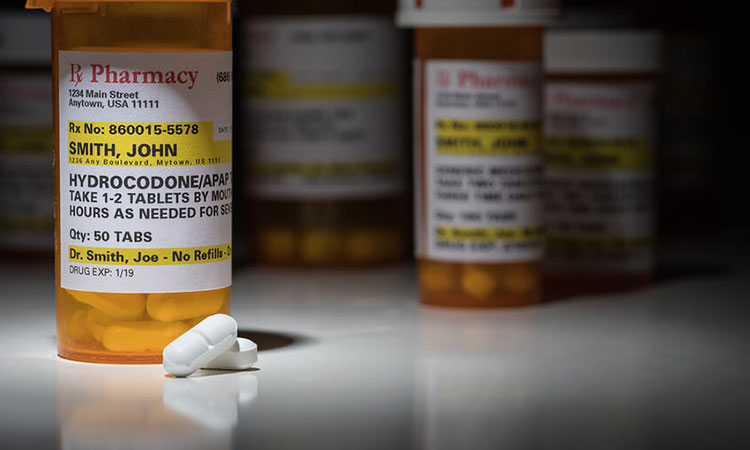
Like most prescription painkillers, hydrocodone cessation can produce unpleasant withdrawal symptoms that range from mild to severe and vary between individuals. Just as the withdrawal timeline can be affected by the extent of physiological dependence, so too can the severity and variety of withdrawal symptoms.
Hydrocodone Withdrawal Symptoms
Specific withdrawal symptoms that occur when hydrocodone use is discontinued may include:
- Muscle aches
- Runny nose
- Lacrimation (excessive tearing)
- Sweating
- Chills and goosebumps
- Abdominal cramps
- Nausea and vomiting
- Diarrhea
- Anxiety
- Depression
- Agitation and irritation
- Restlessness
- Headaches
- Moodiness
- Fatigue
- Trouble sleeping
- Difficulty concentrating
- Drug cravings
- Irregular heart rate
- High blood pressure
- Thoughts of suicide
Although these unpleasant symptoms may persist as long as 5-7 days, a professional intervention that includes medications and therapy can ease discomfort and significantly reduce the risk of relapse.
What Is Hydrocodone and How Does it Work?
Hydrocodone is the principal active component of several popular prescription narcotics, including Vicodin and Norco. In fact, hydrocodone products are among the most commonly prescribed drugs in the U.S. Due to a high potential for abuse and addiction, prescription opioids are only indicated as a treatment for moderate-severe acute pain, and sometimes chronic pain, but usually just in extreme cases such as cancer or palliative care.
Hydrocodone elevates levels of dopamine in the brain. When a person uses hydrocodone routinely for a prolonged length of time, the brain builds a tolerance to the amounts being used, and increasing amounts of the drug will be required to achieve the desired effect.
Taking increasingly large doses of hydrocodone, however, may contribute to the rapid development of physiological dependence and, ultimately, addiction. Opioid drugs attach to opioid receptors throughout the central nervous system, causing depressant effects, such as reduced breathing rate, heart rate, blood pressure, and body temperature.
When a person is dependent on an opioid like hydrocodone, the abrupt cessation of use engenders stressful consequences as the brain and body actively work to reestablish balance. Blood pressure, heart rate, respiration, and body temperature may all increase significantly if hydrocodone use is stopped suddenly. Therefore, it is not recommended to discontinue a hydrocodone product “cold turkey” or without seeking medical supervision.
Timeline for Hydrocodone Withdrawal

Most forms of hydrocodone, including Norco and Vicodin, are immediate release formulations, with an effective duration of around 4-6 hours. However, there are a few extended-release varieties that last up to 12 hours a dose, which could somewhat delay the onset of withdrawal symptoms.
Generally speaking, hydrocodone withdrawal will be between 6-12 hours after the last dose. Opioid withdrawal usually peaks within 72 hours, and physical symptoms can last up to a week, while psychological symptoms and cravings may persist for much longer.
The amount of time a person used hydrocodone, as well as the average dose may be factors in the withdrawal timeline and intensity of symptoms. The longer a drug is used, the more likely that a significant chemical dependence has developed. Some underlying medical or mental health problems may also affect how long it takes for one’s nervous system to restore itself to a healthy state.
Detox for Hydrocodone Addiction and Treatment
Medical detox is a professional method of drug removal used to treat patients following cessation of substance use. Detox can occur in either an outpatient or inpatient program, providing that a trained medical professional is closely supervising the detox process.
Medical detox is the ideal choice for minimizing hydrocodone withdrawal and ensuring the client’s safety and comfort throughout the process. Hydrocodone detox programs monitor the client around the clock and administer medications to keep patients comfortable and stable for an average period of 5-7 days.
Medication for Hydrocodone Dependence Treatment
Midwood Addiction Treatment may give patients medication approved to treat opioid dependence, such as Suboxone. Suboxone includes Buprenorphine, a partial opioid agonist, meaning that it attaches to opioid receptors in the brain but does not activate them in the same way as other, more potent opioids. For this reason, buprenorphine, when used correctly, can help mitigate withdrawal symptoms and cravings.
Also, buprenorphine’s effects plateau, so even if a person does try to abuse the drug, it is not likely that the person will be able to achieve a high. In addition to buprenorphine, Suboxone also contains naloxone, an opioid antagonist.
Opioid antagonists prevent other opioids from reaching the opioid receptors in the brain and central nervous system, rendering them ineffective. Naloxone generally remains latent in buprenorphine products unless the drugs are tampered with and injected.
After Detox
Detox should be only one part of a more comprehensive substance abuse treatment plan that will also include psychotherapy, individual and family counseling, group support, and relapse prevention techniques. Midwood Addiction Treatment employs caring medical staff who specialize in addiction and provide clients with the tools and support they need to recover from drug and alcohol addiction fully.
If you are suffering from an addiction to drugs or alcohol, please contact us as soon as possible to find out how we can help you achieve abstinence and begin to experience the fulfilling life you deserve!